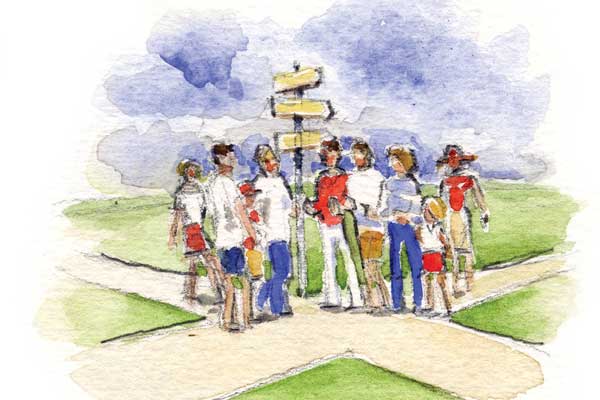We've all heard about history's big and famous icons, but what about its small and unfamous ones?
History lurks in the towering cathedral, mighty fortress and lofty chamber where solemn-faced politicians with mutton-chop whiskers signed the legislation that created a nation. Yet there's another kind of history. It's less obvious but, if you want to feel the long-gone daily life that made your homeland what it is today, this "crossroads history" is more satisfying.
That was my father Charles's term for the history that the unfamous made. He believed that historians were so obsessed with the likes of Samuel de Champlain and John A. Macdonald that they failed to acknowledge that the William Henry Bruces and Sarah Bruces also contributed to our history. They were his parents.

Will was a farmer, carpenter, pulpwood cutter and inshore fisherman, all rolled into one. He was far from rich but in Port Shoreham, NS, he was a damn fine neighbour, and so was Sarah-the most tireless of Good Samaritans.
At least half the folks they grew up with settled in "the Boston States," Toronto, the Prairies and even far-away California, but every summer steam locomotives hauled them all home. They sat in the parlours of those who'd never left Port Shoreham, to joke, gossip, catch up and reminisce.
That's what people do at a crossroads: meet, talk and move along. Crossroads history is about family and friends, yes, but it's also about sweat, grief, faith, cows, joy, scythes, herring, danger, laughter, blisters, school desks and lower back pain.
Skilled workers put the cross on the cathedral's steeple. Harness-makers sold their goods to the stable at Government House. Oyster fishermen provided the slimy, succulent goodies that the Fathers of Confederation washed down with champagne. Tailors made the politicians' clothing, and master carpenters built the gleaming furniture in the legislative assembly.
What tools did these tradesmen use? What did their workshops look, sound and smell like? How hard did their wives work? What were their kitchens like? How did working stiffs and their families amuse themselves?
Forget the towering cathedral; instead consider the Old Meeting House in Barrington, NS. Built in the 1760s by immigrants from New England, it's the oldest non-conformist house of worship in Canada, and I want to know who carved that picture of a square-rigger into the back of a bench in the gallery.
You can learn about the Old Meeting House, and tens of thousands of other crossroads-history sites at www.historicplaces.ca-the website for Canada's Historic Places Initiative. The federal government launched this program only six years ago, and since then every province and territory has come aboard.
What they're all doing-with the help of local historical societies and municipal governments-is building an online registry of historic places. The most wonderful feature of this cyber catalogue is that it lists not just famous National Historic Sites like Signal Hill and the Fortress of Louisbourg, but canals, warehouses, lighthouses, grain elevators, sod huts, cobblestone streets, graveyards, a stone-walled cattle pound, a hospital for sailors, a factory that made oilskins for the fishing industry and even empty fields where, a long time ago, something significant stood or happened.
Among the hundreds of listings in Atlantic Canada are an 18th-century tavern in Lunenburg, NS, that became a temperance hall; a house in Summerside, PEI, built with ballast stones from tall ships; a soccer field in St. Lawrence, NL, that reflects the sport's early importance in the community; a commercial building in downtown Moncton that boasted a false foundation to hide a bootlegger's booze-and, in each province, at least one little church around the corner.
For a change then, I actually have something good to say about a government program. Canada's Historic Places Initiative does what it promises to do. It "captures the soul and spirit of our country."
